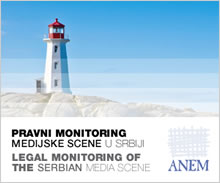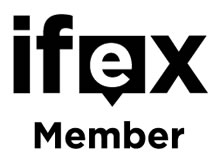21. 04. 2011
Twitter Revolution
Belgrade, April 21, 2011 (Source: Media Center Newsletter) - I imagine a journalist who is not enamored with communication or at least conveying of messages. Every day, the journalistic profession adopts new patterns (paradigms) of communication. Most often, the innovations lead to passionate acceptance or resistance.
If these innovations were not able to affect the economic structure of the media, the resistance would probably be stronger.
At the moment, Twitter is the fastest-growing new thing on the internet. The number of its users is increasing at the rate of 50% per month. Looking at its capabilities, there is a challenge: it is too simple to entice you to get to know it in more detail, while its main strength are precisely such detail that are not visible at the first sight.
The other night I was working at the computer when the ground shook. My family were asleep, and it was too late to call my friends. The Twitter users were the only ones with whom I could share this uncomfortable experience. With a few seconds' "lag", I thought of a trivial question: "Did it shake at your place as well?", but before I could post it, my fellow Twitter users had already begun talking about the earthquake and my question became (only) a confirmation: "Yes, there was an #earthquake in Novi Sad too".
When a message on Twitter (popularly: a tweet) contains a # (hash) symbol before a word, like here in #earthquake, it denotes a hash tag related to the post. Without any centralized authority, this tag appeared spontaneously this night in Twitter posts. Ability to search and read specially tagged tweets is an important functionality of Twitter, since it allows us to identify the messages we want to read out of the huge number of total posts (1 billion a week). In the following minutes (in fact, after only six minutes), we were able to find out the strength and the epicenter of the earthquake, together with a link to a foreign web site with a graphical presentation, and to gain information directly from people living in Kraljevo.
Only 30-40 minutes after that, the electronic media reacted to the events. The web site of the Seismological Institute of Serbia was significantly slower.
There are several concepts that form the basis of the Twitter phenomenon.
First, the messages are short - up to 140 characters - and hundreds of messages can be read in a very short amount of time (unlike web sites).
Second, there is (democratic) system of reputation of Twitter users. Any one of them (a follower) can read the messages of any other user, without approval. While Facebook brings together your former schoolmates, on Twitter you can find people who you wish were your schoolmates. One company, whose tweets I used to follow, took advantage of the tag "#earthquake" to post an advertisement. They abused the moment of high interest in posts with such tag. Because of this behavior and their lack of consideration, I decided to stop following (to "unfollow") them. This freedom to read or not to read someone's posts allows building of reputation of Twitter users, which is a public information and is expressed as number of followers. In an email system this would be practically impossible to achieve.
Third, there is a simple way for any Twitter user to resend (retweet) a message sent by a another user and deliver it to their own followers. It sometimes happens (not so often, but it is possible) that a retweeted message allows someone with a small number of followers to reach a huge number of readers.
Fourth, Twitter is mobile and cheap due to its technological simplicity.
Although they sound trivial, these (free) concepts are changing the world. Wikipedia has an entry on "Twitter Revolution". The first of them occurred in 2009 in Moldavia. In the same year, Twitter actively participated in Iranian protests after the presidential election. This year, Twitter was used in Egypt (tag #25jan) and in Tunisia.
Stevan Majstorovic
-
No comments on this topic.





